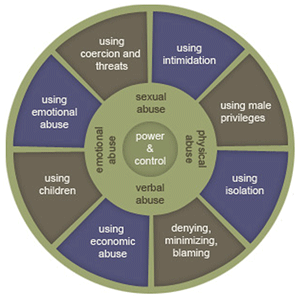Dr. Robert K. Bitting, Sara E. Mahoney
Domestic Violence is a pattern of coercive and assaultive behaviors that adults or adolescents use to control an intimate partner. This abuse can be physical, psychological, emotional, sexual, or financial – or any combination of these tactics - designed to force the victim to change behavior in response to the abuse. It is the pervasive and methodical use of threats, intimidation, manipulation, and physical violence by someone who seeks power and control over their intimate partner. Domestic violence occurs in current or former dating, married or cohabiting relationships of heterosexuals, gay, lesbian, bisexual and transgendered individuals.
This program is designed to help participants recognize the dynamics of domestic violence well enough to enhance victim safety and offender accountability. Specifically, participants will learn how to:
Learn what you can do to help victims and families experiencing domestic violence!
Dr. Robert K. Bitting, Sara E. Mahoney , Erika K. Reiss, Elizabeth Cooke
The Accepting Change Today (ACT) program is a psycho-educational, group oriented, confrontative program with an emphasis on accountability. The program is a partnership between Law Enforcement Agencies and Mental Health Professionals in Allegany County, NY. The primary goal of ACT is to help abusive male partners stop, and not repeat, violence against their female partners. This is done by challenging the men to examine their belief systems and recognize their emotions. The facilitators of the program provide educational and behavioral tools necessary for the men to overcome their patterns of domestic violence and lead a fulfilling life.
The foundation of this group can be distilled into three concepts: Respect, Responsibility, and Reality. The integration of these three items leads to long-term behavioral changes. This program teaches the men the means by which to re-establish dignity and integrity for themselves and for their current or future relationships.

The ACT program is based on two well-known theories: Cognitive-Behavioral (CBT) and the Social Change Model (SCM). The cognitive-behavioral component of the program draws heavily from the teachings of Albert Ellis. The followers of CBT view violence as a learned behavior. This model sees the violence, in part, as a skill-deficit, stress management, or anger control problem.
The SCM view is a multi-step approach to changing the abusive behavior. The stages of change are:
When the individual is not yet acknowledging that there is a problem behavior that needs to be changed. It is during this step in the ACT II program when the offenders will be the most resistant, defensive, and manipulative.
When the individual is acknowledging that there is a problem, but is not yet ready or sure of wanting to make a change. This is when the facilitators in the program witness the most bargaining from the men. During this time, the men are most open to receiving new information about their problem behaviors, and are more likely to accept educational interventions.
This is when the men make the commitment to change. This stage is when the men begin to become actively involved in the class. They are more willing to share their own emotions, and are more receptive to practicing the new skills in their daily lives.
During this step, the individual not only believes that they have the ability to begin making changes in their life, but are actively involved in taking those steps. This is the step during which most people succeed or fail based on their willpower.
This is when the individual avoids temptations to returning to their problem behavior(s). The men in this stage are constantly reformulating the rules of their lives and are acquiring more new skills in the class to deal with the chance of relapse.
It is fairly common for a person who is ceasing a problematic behavior to suffer from at least one relapse. The hope of the ACT II program is to reduce the chance of re-offending. The integration of the three core concepts will aid in reducing the chances of relapsing.
Note: See additional information by viewing the full PDF above.